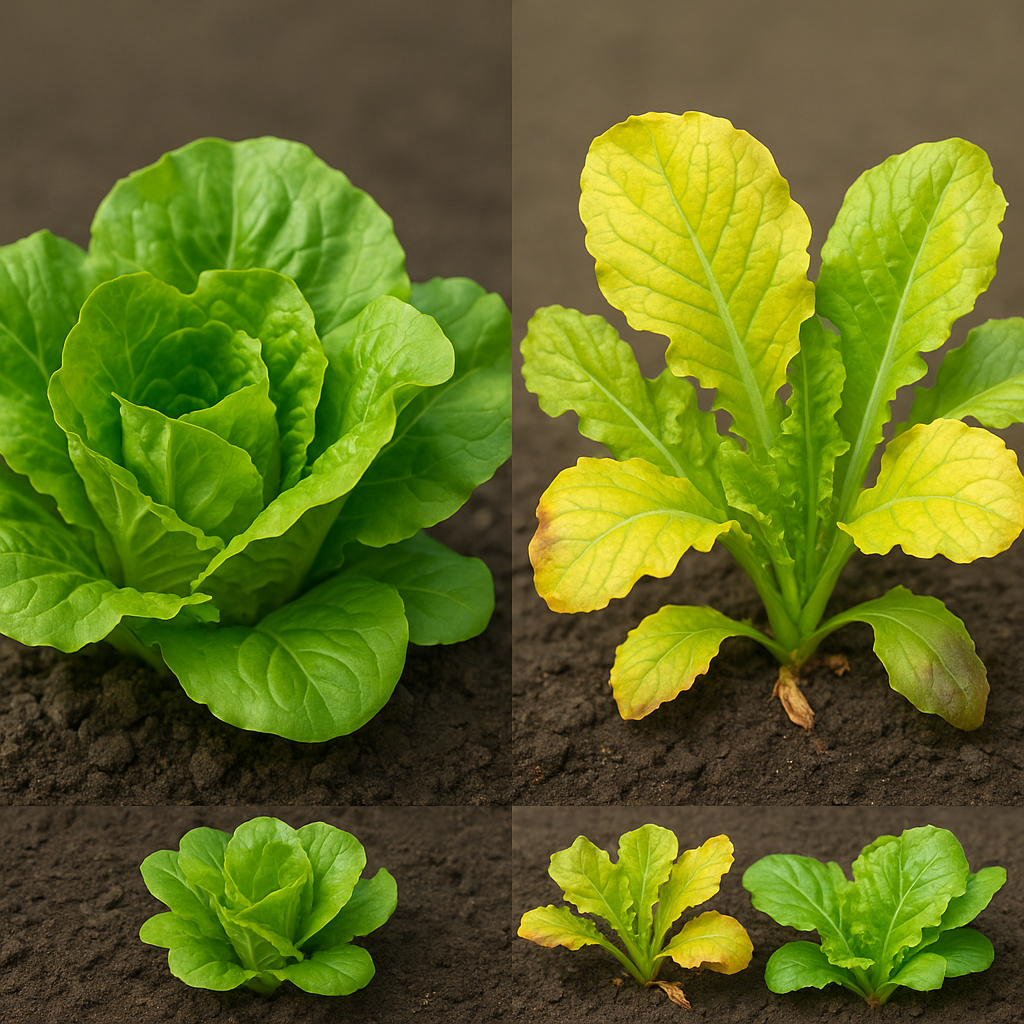Introduction
If you’re searching for lettuce growing tips, you’re in the right place. Lettuce is one of the most beginner-friendly crops you can grow, whether you have a sprawling backyard or just a small container on your balcony. Why is lettuce such a smart pick for first-time gardeners? For starters, it grows quickly — many varieties can go from seed to salad bowl in just a few weeks, so you won’t wait long to taste your success.
It’s also wonderfully forgiving about space, thriving in raised beds, garden rows, or even shallow pots on a sunny window ledge. Plus, there’s a huge range to choose from: crisphead, leaf, butterhead, and romaine each bring their own unique flavor, texture, and color to your kitchen.
The real magic, though, is in harvesting your own ultra-fresh, pesticide-free greens whenever you want them. You’ll notice the difference in crunch and flavor compared to store-bought lettuce, and there’s a special satisfaction in knowing exactly how your salad was grown. Ready to dig in? This post will share the top 5 lettuce growing tips to make your first gardening experience a success — from seed selection to harvesting, with simple steps you can act on right away.
Pick the Right Lettuce Variety
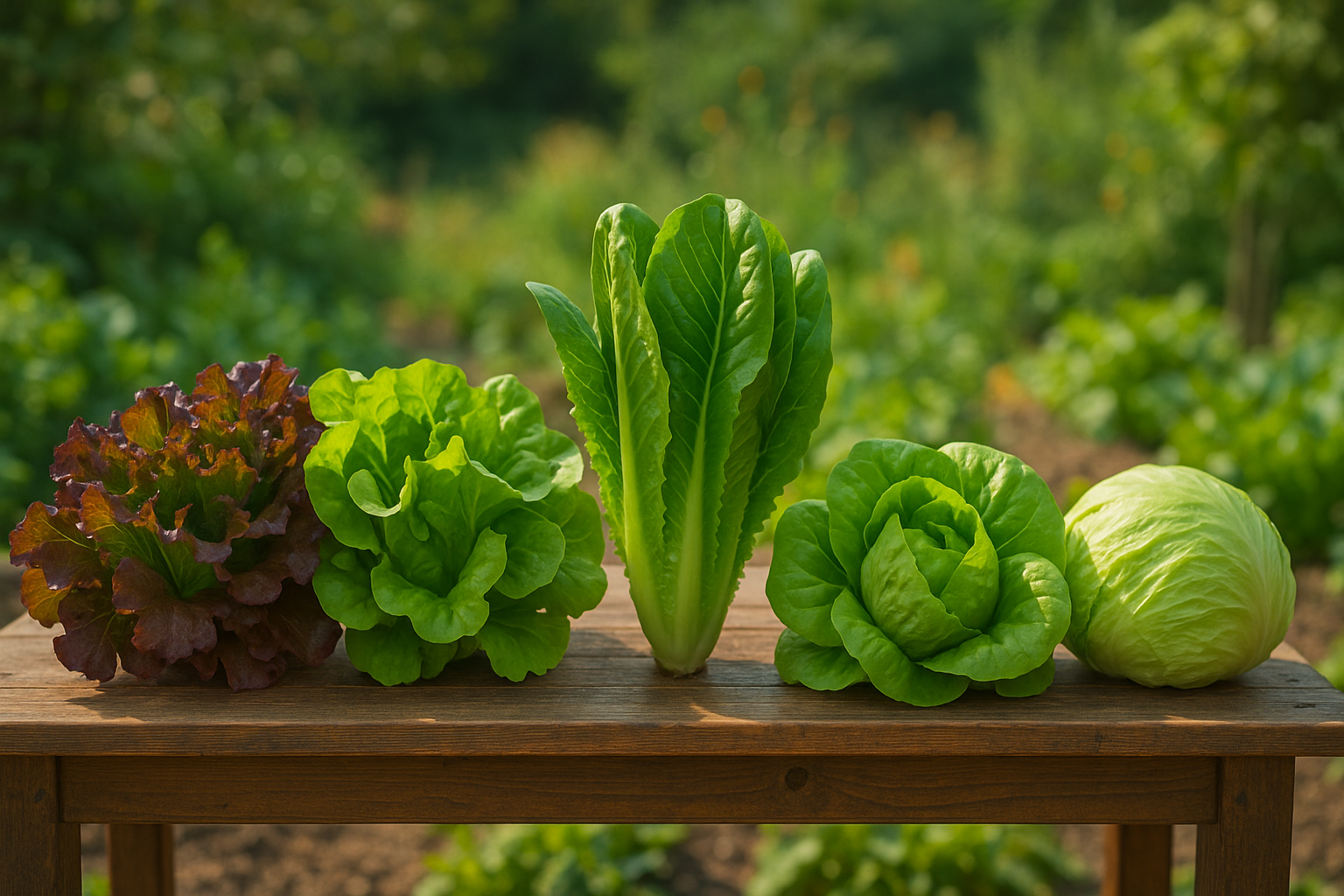
Lettuce comes in several main types, each offering unique benefits for home growers. Leaf lettuce is known for its loose, tender leaves and is one of the easiest varieties to grow. It requires less patience since you can harvest as soon as the leaves reach your preferred size.
Romaine forms upright heads and adds a crunchy texture to salads, while being slightly more disease-resistant than other types—a nice bonus for beginners. Butterhead, which includes Bibb and Boston lettuces, forms soft, loosely packed heads and offers a sweet, delicate flavor; these varieties are also fairly forgiving but need a bit more moisture to thrive.
Crisphead, like iceberg, forms tight, crunchy heads but can be tricky because it’s sensitive to heat and requires a longer growing season, making it less ideal for first-timers.
For beginners, leaf lettuce varieties such as ‘Black Seeded Simpson’ or ‘Salad Bowl’ stand out for their speed, resilience, and “cut-and-come-again” harvesting, allowing you to enjoy multiple yields in one season. Romaine types like ‘Parris Island Cos’ are also beginner-friendly if you want a bit more crunch.
When sourcing seeds, stick to reputable garden centers, local co-ops, or well-reviewed online seed suppliers. Look for organic or untreated seeds to ensure healthy, vigorous plants. Always check seed packets for germination dates and preferred growing conditions, which can guide your planting timing.
Starting with easy, reliable varieties will boost your confidence and make that first lettuce harvest quick and rewarding.
Preparing Soil and Planting Properly
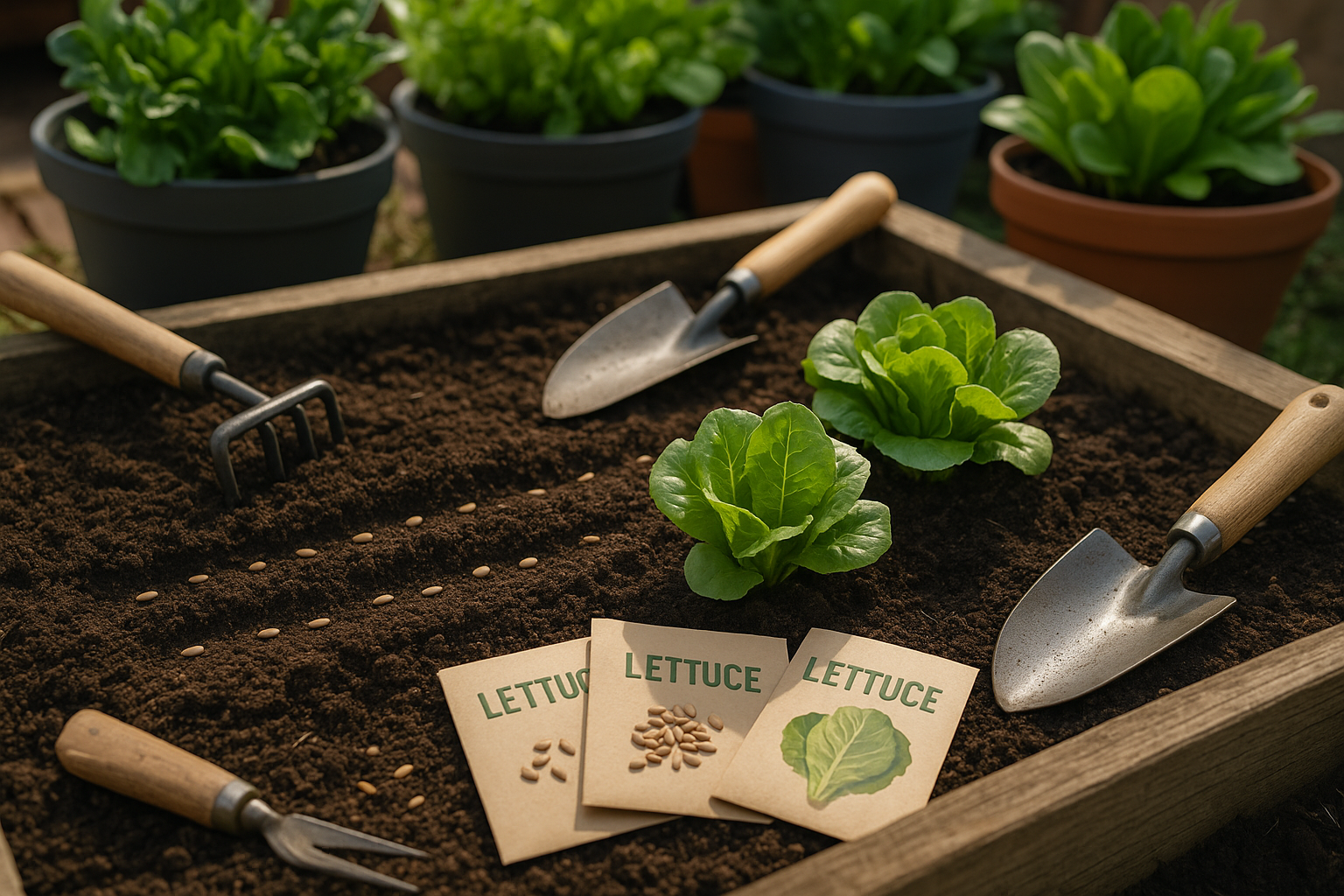
For the healthiest, most flavorful lettuce, start with the right soil conditions. Lettuce thrives in well-drained soil that’s rich in organic matter and has a slightly acidic to neutral pH, ideally between 6.0 and 7.0.
If your garden soil is heavy or clay-like, amend it by adding plenty of compost or aged manure to boost fertility and improve drainage—working at least two inches into the top six inches of soil makes a big difference. For those gardening in containers, choose a high-quality potting mix enriched with compost; since lettuce has shallow roots, a six-inch-deep pot is sufficient.
Before planting, rake the soil surface smooth and level to avoid pooling water. When sowing seeds directly outdoors:
- Plant seeds about ¼ inch deep and one inch apart in rows that are 12–18 inches apart.
- Thin seedlings later so each plant stands six to eight inches apart.
If you’re transplanting seedlings started indoors, harden them off by gradually exposing them to outdoor conditions. Then plant them in the garden with the same spacing, making sure the roots are well-covered and watered in.
Lettuce prefers cool weather, so sow seeds or set out transplants as early as the soil can be worked in spring, or in late summer for a fall crop. For succession planting, sow a small patch every two weeks to ensure a steady harvest.
This methodical approach keeps things simple for beginners and leads to a rewarding lettuce crop all season long.
Water Wisely for Happy Greens
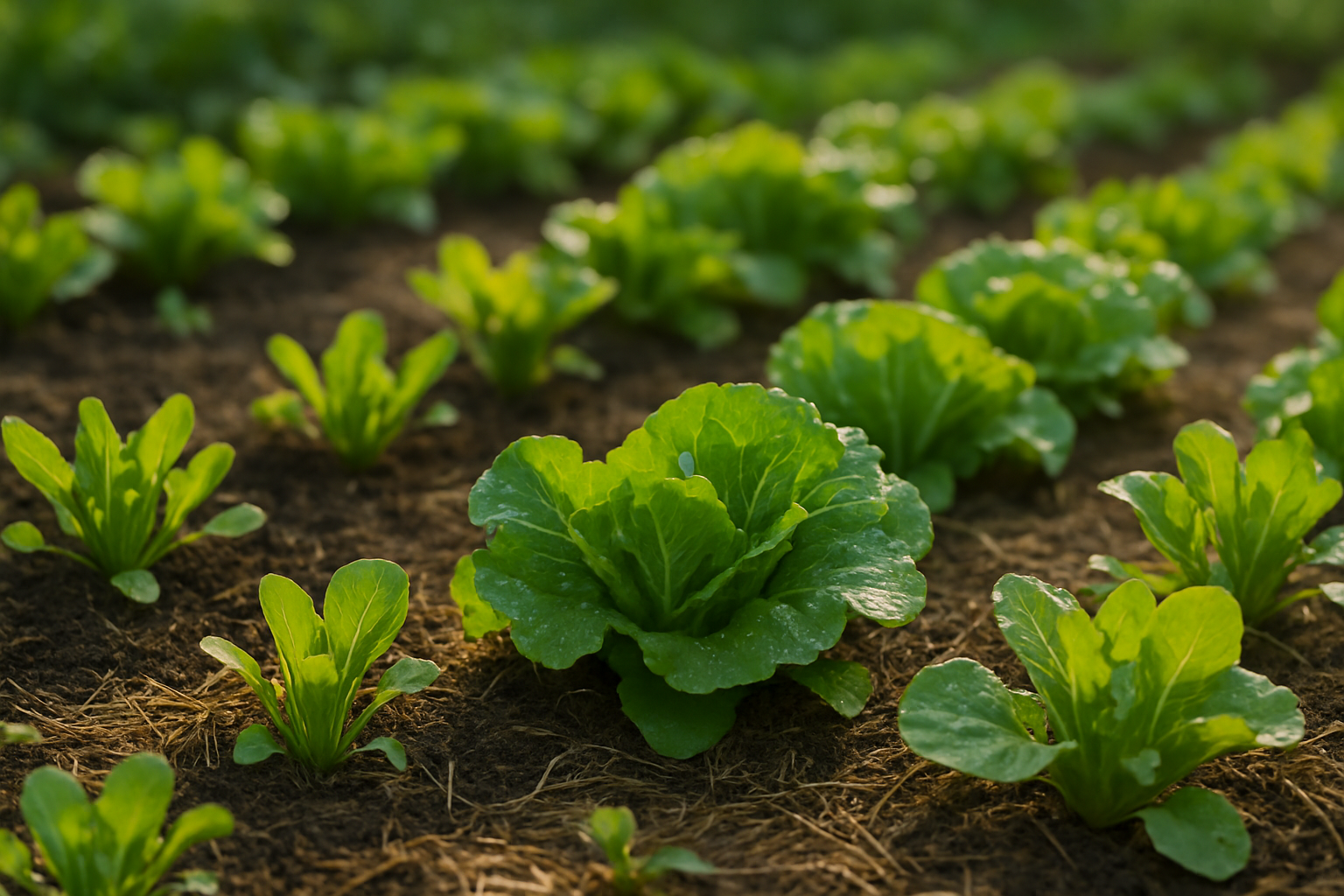
Consistent moisture is key for growing lush, crisp lettuce, as fluctuations can cause tough leaves or a bitter flavor. Since lettuce has shallow roots, it’s best to keep the soil evenly damp rather than letting it dry out completely between waterings.
The most effective way to water is at soil level, directly at the base of your plants, using a watering can or soaker hose—this helps prevent fungal diseases that can arise from wet foliage. Water in the early morning to give leaves time to dry before evening, which further reduces disease risk.
Consider spreading a thin layer of mulch, like straw or shredded leaves, around the plants; this helps the soil retain moisture and keeps roots cool, especially during hot spells.
Be careful not to overwater—soggy soil can lead to limp, yellowing leaves and even root rot. Meanwhile, underwatered lettuce wilts quickly, with dull, drooping, or limp leaves.
If you notice these symptoms, adjust by checking soil moisture daily: stick your finger an inch into the soil—if it feels dry, it’s time to water. Keep the watering consistent, and your lettuce will reward you with vibrant, tasty greens ready for your next salad.
Sunlight, Shade, and Temperature Tips
Lettuce thrives best with around six hours of morning sun each day, but it’s surprisingly flexible—you can successfully grow it even in gardens with dappled afternoon shade. In fact, too much intense summer sun can stress lettuce, causing the leaves to wilt or become bitter.
If your yard gets hot midday rays, choose a partial shade spot or use something simple like a lightweight shade cloth draped over hoops to filter the light. Another smart approach is to tuck lettuce behind taller crops like tomatoes or sunflowers for built-in heat protection.
Timing is also key: planting in early spring or late summer gives lettuce the cool conditions it loves, helping you avoid the scorching summer peak. Temperature has a big impact on lettuce quality and flavor; when it gets too hot (especially above 75°F/24°C), lettuce tends to bolt—sending up flower stalks and quickly turning leaves tough or bitter.
To keep salads crisp and sweet, sow seeds in cool weather or try heat-tolerant varieties if you want to harvest through the warmer months. By paying attention to sunlight, shade, and seasonal temperatures, you’ll help your lettuce stay tender, slow to bolt, and delicious all season long.
Smart Harvesting for Continuous Supply
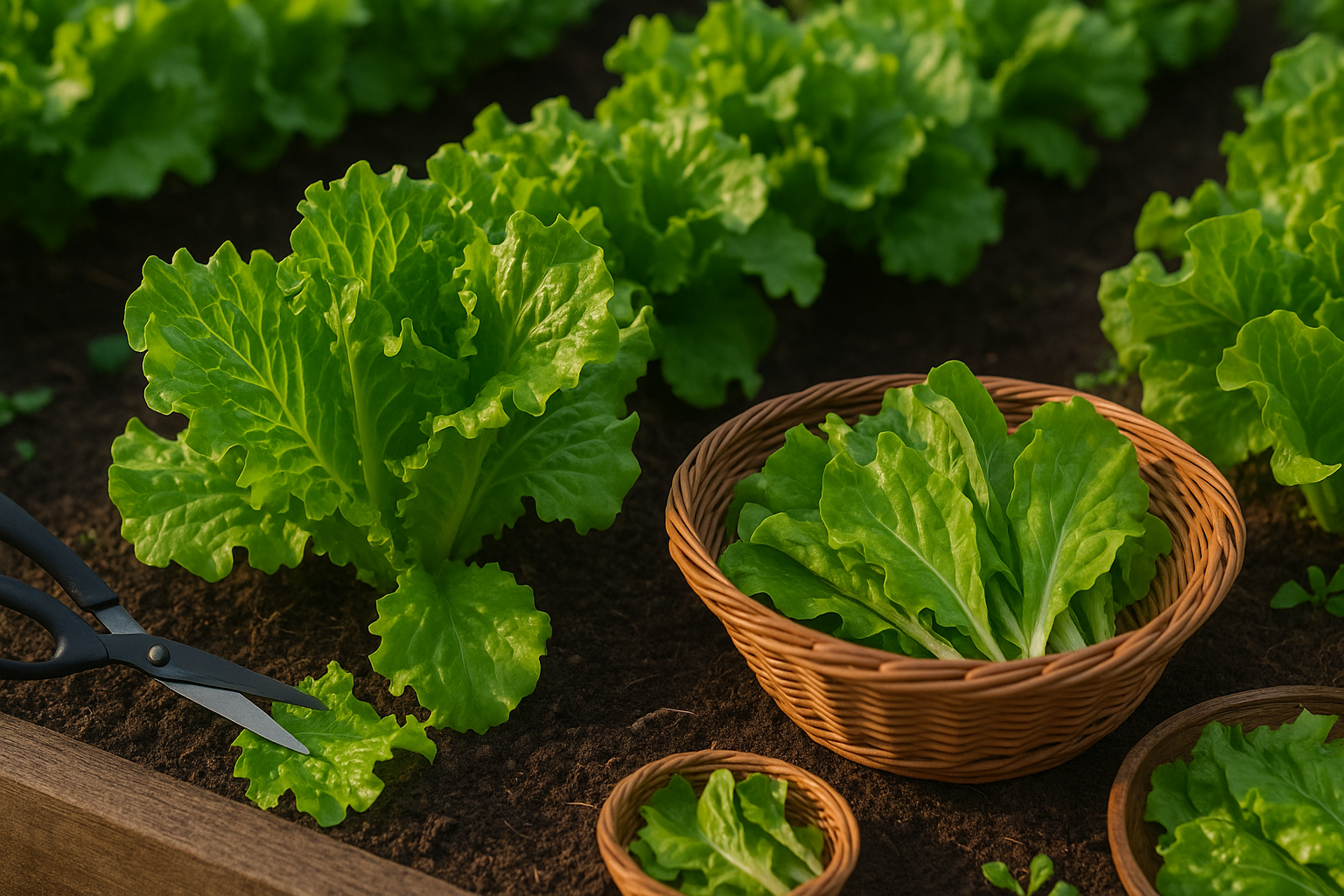
Smart harvesting is the key to enjoying lettuce that’s crisp, flavorful, and long-lasting, while also keeping your beds productive for weeks. For leaf lettuces like Romaine or Butterhead, you can start harvesting when the leaves are about 4-6 inches tall. Simply pinch or cut the outer leaves about an inch above the base, leaving the center intact so new leaves can regrow.
This “cut-and-come-again” method lets you return every few days for fresh salads, instead of removing the whole plant at once. For head lettuces like Iceberg, wait until the heads feel firm and full before slicing them off at the soil line.
If you prefer younger, sweeter leaves, you can selectively pick outer leaves from almost any variety to encourage more internal growth. After harvesting, rinse the lettuce gently in cool water, then dry it thoroughly with a salad spinner or towels—excess moisture shortens shelf life.
Store the dry leaves in a breathable bag or container lined with paper towels in the fridge; this keeps them crisp for up to a week. Regular small harvests also deter pests and help lettuce plants stay healthy throughout the season, giving you more from every square foot of garden space.
Troubleshooting Common Lettuce Problems
Even beginner gardeners can run into common lettuce problems, but most are easy to fix with a little attention. Pests like slugs and aphids love lettuce leaves as much as we do, but you can protect your crop without harsh chemicals.
For slugs, try hand-picking them in the morning or evening, setting out shallow pans of beer to trap them, or sprinkling crushed eggshells around plants as a barrier. If aphids appear, simply spray your lettuce with a direct blast of water or introduce helpful bugs like ladybugs to keep their numbers down.
Watch for disease signs like brown spots or slimy leaves, which usually indicate too much water or poor airflow. Spacing your plants out and watering at the base can help prevent these issues.
If your lettuce suddenly shoots up and flowers—called bolting—it’s a natural response to hot weather. While bolted lettuce gets bitter, you can delay this by planting in cooler months and choosing heat-resistant varieties.
Don’t be discouraged if a few plants struggle. Lettuce is surprisingly resilient, and most issues are quick to spot and correct. With a bit of care and observation, you’ll have crisp, healthy leaves all season.
